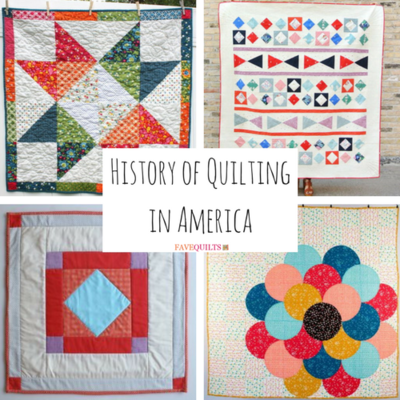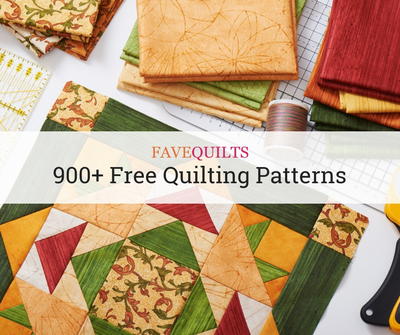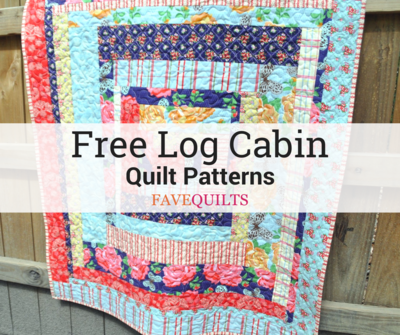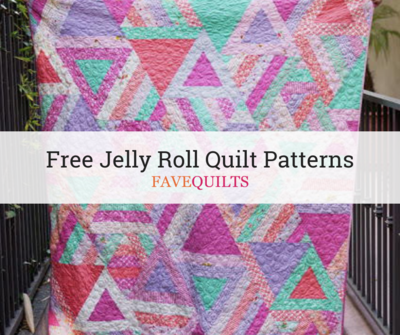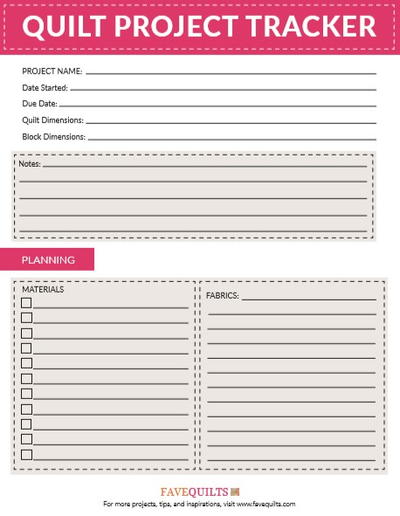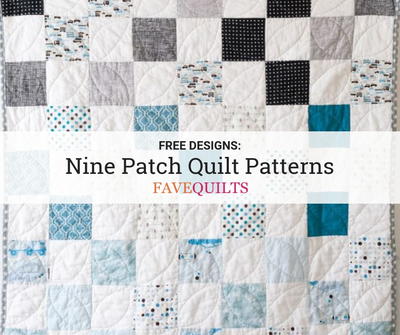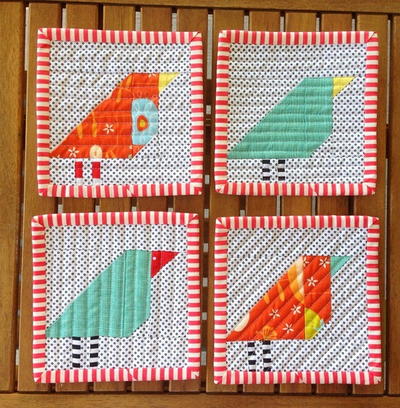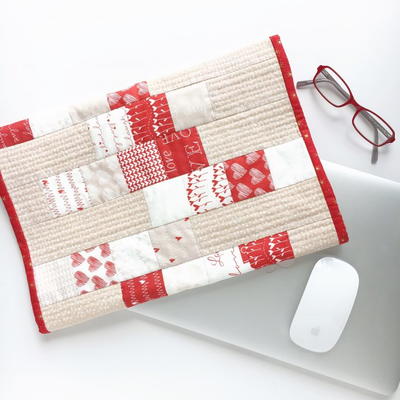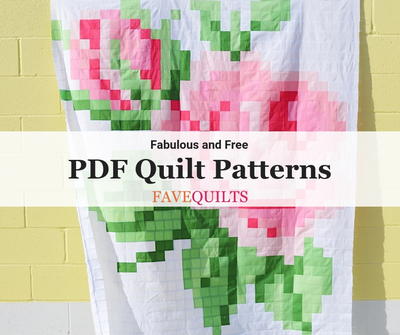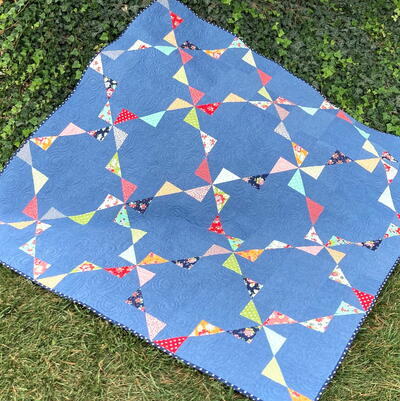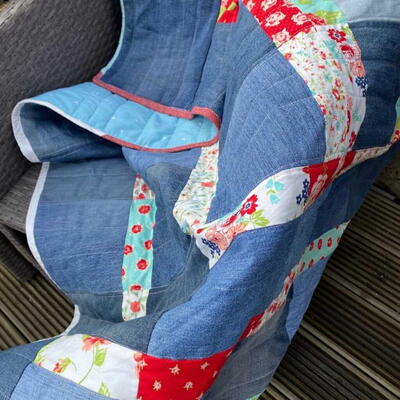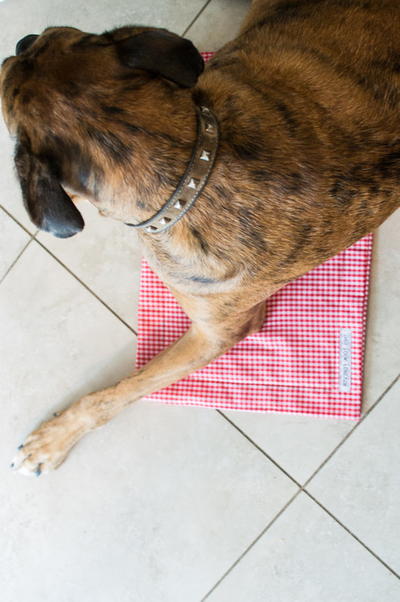A Brief History of Quilting in America
Learn how the history of American quilting has changed over the centuries!
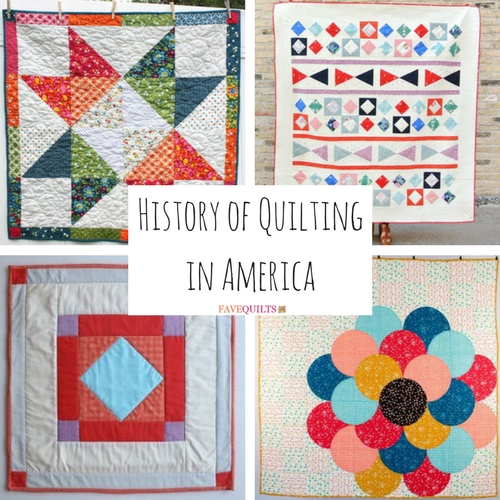
Do you love learning about history? Are you excited to know more about your favorite craft? If so, be sure to read this article from FaveQuilts on the history of quilting in America. In this article, we trace how quilting traditions have emerged and changed overtime due to economic, social, and political circumstances from eras of the past.
Here, you can learn about a brief history of American quilting and how the most beloved traditional quilt patterns came about in four major sections that outline distinct historical periods: Early American and Colonial Quilts, Civil War Quilts, Twentieth Century Quilting, and Modern American Quilting.
Within each section we were sure to include vintage quilt patterns inspired by the designs from each distinct time period. Plus, at the end we have included a selection of informative bonus resources for those of you who are excited to learn even more!
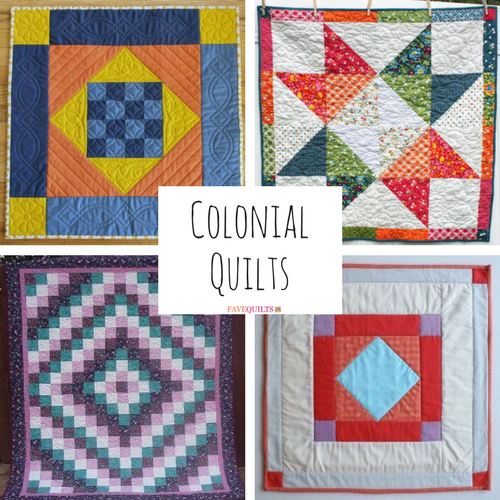
Early American Quilt Patterns: 1650-1850
When the Dutch and English settlers introduced quilting to the United States, quilters maintained a practical approach to their craft. Since daily chores included spinning and weaving, there was little time left for quilting, much less artistic quilting. When times became hard, these functional blankets were made from recycled scraps. Quilting traditions emerged across the country, such as the quilting bee. At quilting bees, quilters gathered together for this social event where several quilts could be made at a time. By the mid-1800s, the landscape of America transformed as the Industrial Revolution led to the development of technology like the sewing machine. As textiles and sewing machines became readily available, more families were able to create elaborate and artistic applique quilting designs that had previously been created only by the upper class.
Colonial Quilting Designs:
In 1700s, whole cloth quilt designs, broderie perse quilts, and medallion quilt patterns were extremely popular. Whole cloth quilt designs, or counterpane patterns, were made by sandwiching large pieces of fabric together, and creating a design through stitching. Medallion quilts were a popular European design in that they offered a wide degree of freedom in creating a central image with borders made with patchwork or applique techniques. Beginning in the mid-1700s, applique quilt patterns were popular with upper class women, who had the time and the wealth allowing them to create such elaborate designs. Opposite applique quilts were patchwork quilt patterns, known for their utilitarian purpose and scrapbusting qualities.
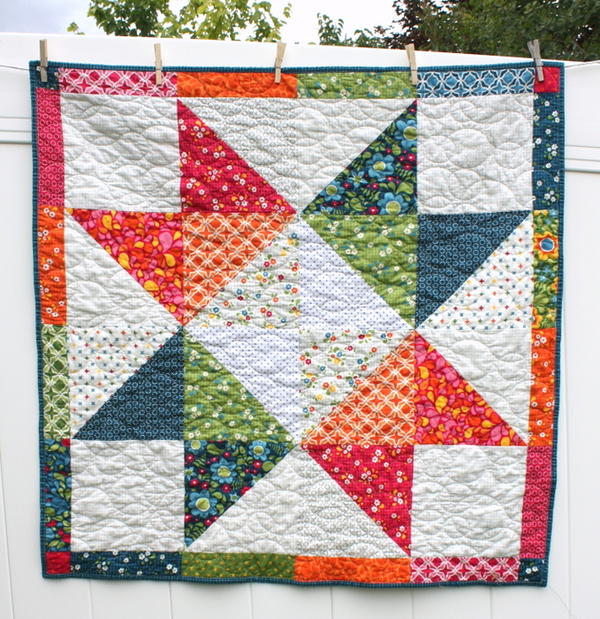
Native American Quilting Designs:
Quilting became popular in many Native American nations during the colonial times, as missionaries introduced the practice of quilting into Native American communities.
The lone star quilting design has been popular for centuries and appears under various names, including the mathematical star design as it was called in England, the lone star pattern as it was called in Texas, and the morning star quilting pattern as it was named by the Plains nation. While this star quilt pattern can either have six or eight points, the morning star pattern has eight. In the Great Lakes area of the United States, quilters from Native American nations incorporated floral applique into their works, often decorating the points of the star with this motif.
In the Everglades, the Seminole nation developed a style of quilted clothing in the mid and late 1800s that used strips from the ends of fabric to create a recognizable patchwork style. This style became popularized especially after the invention of the sewing machine, which made these strips easier to sew.
The quilters of the Hopi nation often used traditional designs, painting and sewing them onto quilts. A popular use of quilts was for the baby-naming ceremony, wherein the father would make and give the child a blanket, which later on became a quilt.
Amish Quilting Designs:
Quilting did not become popular in the Amish communities until the mid to late 1800s. Quilts tended to be made in one color, normally brown, blue, or black. These communities often did not follow national quilting trends, choosing instead to use wools and cottons in place of the popular silks, and simple patterns like the nine patch quilting pattern and the around the world quilting pattern in place of the Victorian practice of elaborately designed “crazy quilts” (which you can read more about in the Twentieth Century Quilting section!). As time went on, new colors like orange, green, and dark red were incorporated into Amish quilting patterns. One popular style that emerged at this time was a design featuring a lone diamond in the center, surrounded only by a border.
Colonial and Early American Quilting Projects:

Civil War Quilts: 1850-1900
Quilting played an essential role during the Civil War. While quilting practices, uses, materials, and patterns varied from region to region and community to community, all forms of Civil War quilting were impacted by the war effort.
Quilting for the Union:
Many Northern women used quilting as a way to contribute to the war effort. Quilts often sold their works at Sanitary Fairs held by the United States Sanitary Commission to support wounded Union soldiers. Many quilts that were sold to garner funds and support for the abolitionist cause popularly included sayings and quotes speaking out against slavery. Notable features of the Northern Civil War era quilts include silk patchwork, floral applique, patriotic quilting patterns, and the introduction of log cabin quilting patterns that were made with high quality materials like silk, wool, and cotton. By the end of the war, an estimated 250,000 quilts were sewn for Union soldiers.
Did you know? Legend has it that log cabin quilting patterns were used to signal that
homes were part of the Underground Railroad. The log cabin quilt block design, long
associated with Abraham Lincoln and the American spirit, was traditionally sewn with
half light-colored and half dark-colored fabrics, with a red or yellow center representing
the hearth and the welcoming candlelit window, respectively. Allegedly, if a quilt had a
black center, that house was a stop on the Underground Railroad.
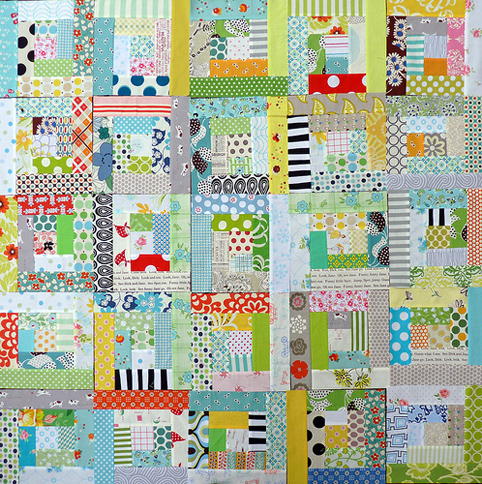
Quilting for the Confederacy:
Similarly in the South, many women quilted to raise money and support for the war effort. These quilters used similar high-quality fabrics as in the North to sew “gunboat quilts” that were sold to buy gunboats for the Confederate cause. Later on, money earned from selling these quilts was used to fund Confederate hospitals as the war effort took a toll on resources and morale. One popular pattern for these quilts was an elegant broderie perse style that involved sewing embroidered applique quilting patterns of flowers and similar motifs to quilts. While the Southern economy grew the cotton, the Northern economy wove these coveted fabrics that became so scarce in the South that by the end of the war, very few quilts were being produced.
African-American Quilting and the Civil War:
In the South, many of the quilts were made by African-American slaves on plantations. Quilts were often made to be sold by these slaves to white consumers, to be used by the slaveholders’ families, or to be used by their own personal families. While tragically many of these quilts have been lost, we do know that since resources were scarce, string quilting patterns made with fabric scraps were popular quilting options both during the Civil War and in post-Emancipation life. Many enslaved women used popular national quilting patterns in their works, as well as original designs like the sawtooth, feathered star, drunkard’s path quilting patterns, ocean wave, railroad crossing, tree of paradise, and nine-patch quilting patterns.
Civil War Quilting Projects:
Common Civil War quilting patterns that grew out of or remained popular in the mid-1800s include string quilt patterns, broderie perse applique, sawtooth quilting designs, feathered star designs, log cabin quilt patterns, drunkard’s path quilting patterns, ocean wave patterns, patriotic quilting patterns, railroad crossing patterns, the tree of paradise design, and the nine-patch quilting pattern. Check out the following patterns to make your own contemporary classics!
- Classic String Quilt Block Tutorial
- Home Sweet Home Nine Patch Throw
- Raw Edge Applique Circle Quilt
- Classic Log Cabin Block
- Reverse Sawtooth Star Block Pattern
- Bonus Project: Scrappy Bear Claw Quilt and Block (Did you know? Bear paw quilts originated from the traditional sawtooth quilting style!)
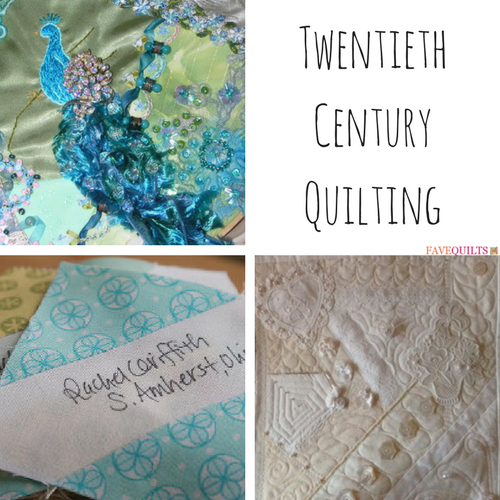
20th Century American Quilting: 1900-1945
By the turn of the twentieth century, quilting was starting to become viewed as a creative art form instead of solely a habit of necessity. As America became a wealthier country, quilters began using high-end fabrics for traditional styles of patchwork quilting patterns and started making applique quilting patterns that had previously been unpopular due to their use of large amounts of fabric. Victorian crazy quilt patterns, typically made by upper-class women, became popular ornamental projects that featured eclectic shapes, luxury fabrics, and irregular designs. In many African-American communities, the pine cone (or pine burr) quilting style was a popular and impressive twentieth-century design that featured the overlaying of triangular pieces that resembled pine cones. However, these creative attitudes in regards to quilting waxed and waned over the course of the century with periods of wartime and peace.
World War I Quilting:
As with the Civil War, quilting was used to rally patriotic spirit as quilters did their part to fundraise for the war effort when America joined in 1917. By 1918, quilting reached new heights in popularity as the American government rationed commercial wool that was used for soldiers’ uniforms and instituted fuel-saving measures with “gasless Sundays,” “heatless Mondays,” and “lightless nights.” Redwork quilting patterns, or red and white embroidered quilts, were a very popular style through the end of World War I.
Quilting in the Great Depression:
With the downturn in the economy, quilting once again became a craft of necessity. The idea of quilting as a practical, cost-effective, and beautiful home decor quilting project became valued as many women kept in the popular “making do” mindset and sewed scrap quilt patterns using fabric scraps from feedsacks, clothing, and blankets to make wildly popular patterns like the dresden plate quilting design. While this era saw a revival in traditional and colonial-style designs, many quilters brought these patterns into the twentieth century with new pastel color palettes.
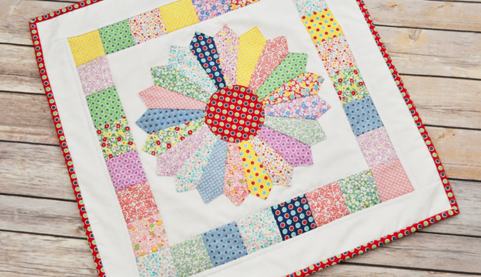
World War II Quilting:
In World War II, quilting again played its role in the war effort. A popular style of quilting was making “signature quilts” where community members would have their names embroidered on quilting squares. Once the blocks were quilted together, the quilts would be sold to raise money for the Red Cross.
Twentieth Century Quilting Projects:
The twentieth century saw an eclectic range of popular styles that included the luxurious Victorian crazy quilts, colonial quilt revival of the Great Depression, pine cone quilting, redwork quilting projects, and signature quilts. Be sure to check out these turn of the century-inspired vintage quilting patterns!
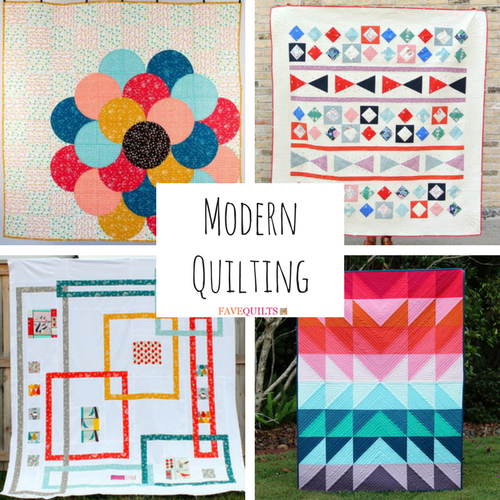
Modern American Quilting: 1945 to the Present
Despite a fall in popularity of quilting after World War II, the art of quilting was revived in communities all across America.
Postwar Quilting:
The following two decades in the aftermath of World War II saw quilting fall out of popularity as it was associated with harder times. Younger generations distanced themselves from this “old-fashioned” craft in favor of more “modern” home decor. Luckily, older generations kept this traditional pastime alive despite a distinct lack in newly introduced quilting designs.
The Quilting Revival:
Fortunately, the 1960s and 1970s saw a revival in the quilting practice when those older post-war generations passed the craft down to their grandchildren. As this era blossomed with Hippie ideals of getting back to nature and rejecting materialist society, traditional crafts like quilting became popular again. With the 1976 bicentennial of the United States, quilting became a symbol of hardworking American heritage and spirit. In the 1970s, cotton quilting fabrics were not readily available, so many quilters opted for quilting with knit fabrics, bright colors, and eclectic designs.
Trends in modern Amish quilting: The widespread rise of interest in quilting led
to a modern appreciation for Amish quilting for those outside of the Amish community.
While the Amish still make quilts for personal use, especially during the cold months of
winter, they have seen a rise in quilt sales to the general public.
Have you ever heard of the Gee's Bend quilting commuity? Small, isolated rural
communities of African-American women quilting in Georgia, Alabama, and Mississippi
have created a form of quilting known as Gee’s Bend Quilts that have been relatively
constant over the last hundred years. What emerged was a body of twentieth century
quilting designs that are now considered to be modern art. Today, these
quilts of Gee’s Bend are notable for their brilliant colors and lively geometric patterns.
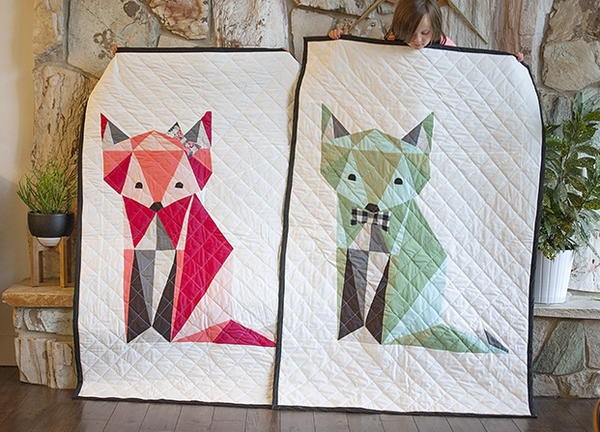
Quilting Today:
Today, contemporary quilting practices take on a range of meanings for quilters. For many, quilting is a relaxing craft and enjoyable pastime. For some, quilting is a way to maintain tradition and heritage. For others, quilting is a purposeful and artistic endeavor.
There are often debates between the distinction of what are referred to as “contemporary quilting” and "modern quilting” forms. According to the Modern Quilt Guild, the definition of modern quilting is that “modern quilts are primarily functional and inspired by modern design. Modern quilters work in different styles and define modern quilting in different ways, but several characteristics often appear which may help identify a modern quilt. These include, but are not limited to: the use of bold colors and prints, high contrast and graphic areas of solid color, improvisational piecing, minimalism, expansive negative space, and alternate grid work. ‘Modern traditionalism’ or the updating of classic quilt designs is also often seen in modern quilting.”
On the other hand, some quilters define contemporary quilting as being more “conceptual,” or driven by ideas, characterized by heavy use of texture, may challenge traditional patterns in new ways. Art quilts are a popular form of contemporary quilting practices.
This distinction between the two styles being said, many quilters use the terms interchangeably, and disagree over the differences between modern and contemporary forms of quilting. The differences may only appear in time!
Postwar Quilting Patterns:
Many postwar quilting designs, including the modern and contemporary, work with and challenge traditional quilting patterns. Today, styles range from contemporary quilt patterns that are more artistic and conceptual, to modern quilt patterns that have clean and geometric characteristics. Check out the following list of patterns for popular postwar styles that include modern quilt patterns, art quilt tutorials, DIY wall art, and 1970s-inspired designs!
- Twin Fox Quilt Pattern
- Color Explosion Flying Geese Tutorial
- French Floret Quilt Pattern - 1970s inspired!
- Modern Wonderland Quilt Pattern
- Interlock Modern Quilt Pattern
- Bonus Project: Free-Form Patchwork Mini Art Quilt
- Another Bonus Project: Modern Patchwork DIY Wall Art
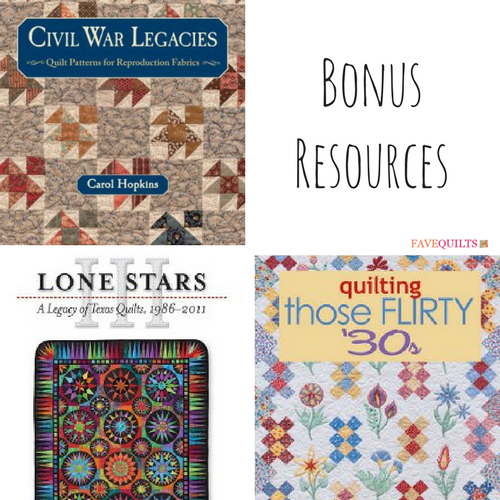
Bonus Resources!
Please check out these wonderful materials for further reading on the history of quilting in America.
- Lone Stars III: A Legacy of Texas Quilts, 1986-2011: If you're curious about the history, social, and political contexts surrounding the lone star quilt pattern, check out this fascinating read!
- Civil War Legacies: Quilt Patterns for Reproduction Fabrics: Check out this book for authentic traditional patterns from the Civil War era interspersed with historical writing!
- Quilting Those Flirty 30s: With this book, you can learn about and sew your own vintage quilt patterns from the 1930s. Plus, each quilt pattern comes with its own dessert recipe. Talk about a sweet deal!
- The Quilts of Gee's Bend in Context: Learn more about the Gee's Bend Quilts from this website developed by the women's program at Auburn University.
- "Quilting the Quilt: Traditional, Contemporary or Modern": Discover the differences between modern and contemporary quilts with this article!
- 50 States Quilt Blocks: With this book, you can sew your own quilt blocks inspired by traditional and modern quilt designs from each state.
- Why Quilts Matter Documentary Series: In this fascinating nine-part documentary series, you can learn about all aspects of the quilting industry, including the history, the antiques market, what it means to be an art quilt, and so on!
- Womenfolk and Patterns from History: You will love these extensive sister websites that have endless pages of brief but informative articles on the history of quilting and vintage quilt patterns!
- Quilting in America: Explore all aspects about the role of quilting in America, both past and present, with this useful website.
What is your favorite traditional quilt pattern? Let us know in the comments below!

